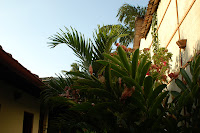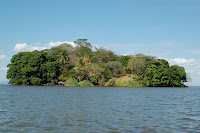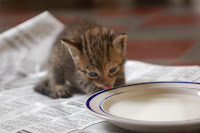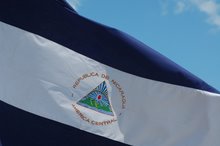skip to main |
skip to sidebar
Today was a big day for me. I rode all the way home from school along the highway on the cross bar of a stranger's bike. I also double rode my first passenger! A student (my favorite) needed to go home due to a massive inflammation of his eye (most likely pink eye) and someone needed to speak to his mother.
For those unaware of this amazing mode of transport, a brief description. You may place any number of people on your bicycle in various locations. Women ride side saddle on the cross bar, regardless of the sex of the driver. Men can ride astride the cross bar or standing on specially installed posts on the back tire of the bike. Any number of configurations can be assembled on one bike at a time and you will regularly see entire families on one bike. Mother side saddle holding baby (or babies), older children at the rear. My personal favorite is a man with a toddler balanced on his knee so the baby/toddler moves up and down with the rhythm of the peddling.
Yes, it all appears very dangerous and your legs tend to fall asleep but you get used to it. Really.

Jeannine with Winston, one of my favorite boys in Granada, at the isletas

Christy with Winston
Plumeria (common name Frangipani; syn. Himatanthus Willd. ex Roem. & Schult.) is a small genus of 7-8 species native to tropical and subtropical America. The genus consists of mainly deciduous shrubs and trees. P. rubra (Common Frangipani, Red Frangipani), native to Mexico, Central America, and Venezuela, produces flowers ranging from yellow to pink depending on form or cultivar. From Mexico and Central America, Plumeria has spread to all tropical areas of the world. In Nicaragua, the plant is known as Sacuanjoche and is the national flower.
 April 26 - tiny buds!!
April 26 - tiny buds!!
 May 8
May 8
May 15

May 22
 May 23
May 23

May 26
Plumeria is related to the Oleander, Nerium oleander, and both possess poisonous, milky sap, rather similar to that of Euphorbia. Each of the separate species of Plumeria bears differently shaped leaves and their form and growth habits are also distinct. Plumeria flowers are most fragrant at night in order to lure sphinx moths to pollinate them. The flowers have no nectar, and simply dupe their pollinators. The moths inadvertently pollinate them by transferring pollen from flower to flower in their fruitless search for nectar. May 27
May 27
 Volcan Masaya is an active volcano located outside of Granada. My family and I, along with Michelle, took a night tour to view parrots, bats and a lava hole that was created in the last few years during a minor eruption. Enjoy the photos!
Volcan Masaya is an active volcano located outside of Granada. My family and I, along with Michelle, took a night tour to view parrots, bats and a lava hole that was created in the last few years during a minor eruption. Enjoy the photos!
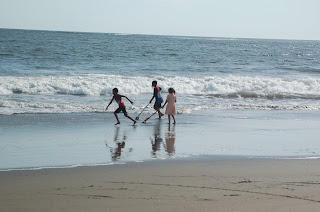 Children playing on the beach near our hotel.
Children playing on the beach near our hotel.












